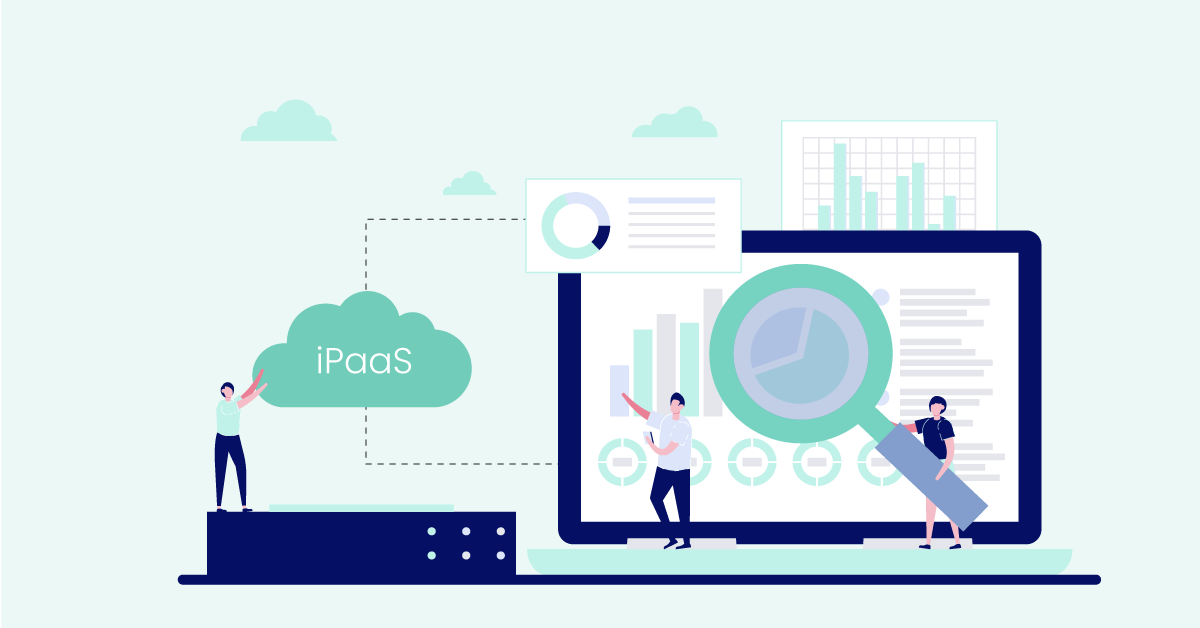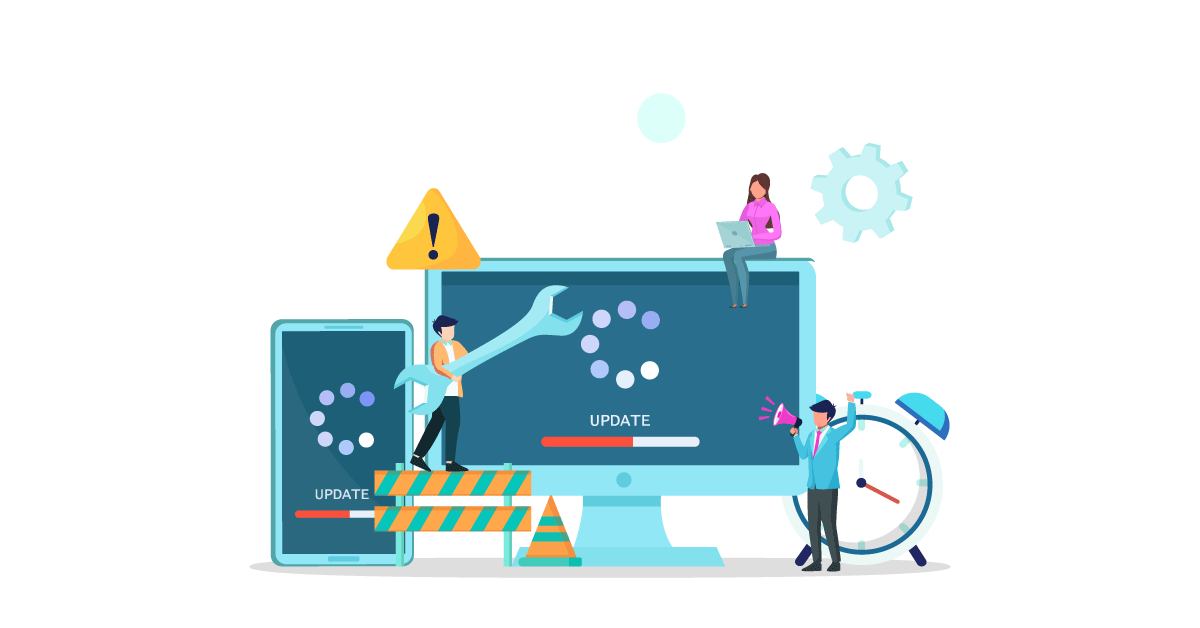Businesses need to think more about ensuring data quality and consistency – especially for systems as they mature along their digital transformation journey. In the age of Big Data, it is more important than ever before to provide accurate and consistent data across multiple applications as well as systems. To handle these challenges, you need a more mature solution to both clean and maintain data at scale.
In areas like this, iPaaS has played a vital role. It solves the integration and development of applications for linking different systems or programs to work in real-time by providing a single platform where there is one solution that can be integrated with any system at IPaaS Solutions. This blog explores how iPaaS simplifies integration and automates data quality and consistency by providing real-world use case examples, followed by the benefits of iPaaS adoption.
Aonflow iPaaS – Free for First 3 Months!
Build and run up to 1,500 transactions monthly with no cost. No payment info needed!
Understanding the Challenge of Data Quality and Consistency
Poor data quality and inconsistency can cause a business to underperform as well. Common challenges include:
Isolated data repositories lead to a fragmented information landscape preventing efficient and maintained consistency (Data Silos).
Manually typing data into a system introduces random errors that can trigger discrepancies and inaccuracies.
Whether you meant to or not, the data in one place may be laid out differently than that at another location. The more varied your formats are from system to system, the harder it is for several systems to share standardized readings.
Information in legacy systems might not sync with the newest data. Therefore, it becomes obsolete and untrustworthy.
All this requires strong solutions to protect data consistency in all your apps and systems. iPaaS responds to this challenge by making integration and data management easy
How iPaaS Ensures Data Quality and Consistency
1. Centralized Data Integration
IPaaS acts as a central repository that can be used to connect multiple data sources and applications. Bringing every system together in one place means data flows smoothly and discrepancies are avoided.
Use Case:
An example is a large global manufacturing firm that integrated its ERP, CRM, and supply chain management systems using iPaaS. These systems previously suffered from data inconsistencies, resulting in production delays and inventory impairment. One global retailer had a common view of its data across systems to ensure uniformity, inventory accuracy, and faster lead times with the help of iPaaS.
Benefit:
Central data integration ensures uniformity in the type or exclusion of all possible redundancies, providing more reliable decisions and higher performance.
2. Automatic Data Sync Scheduler
Such platforms automate the data sync process between different systems in real-time, thus ensuring that information is up-to-date and preventing inconsistencies/outdated details.
Use Case:
An e-commerce merchant uses iPaaS to sync customer data among online stores, CRM, and marketing automation tools. And applications synchronized automatically maintaining up-to-date customer records for accurate marketing messages and providing personalized offers to potential consumers.
Benefit:
By automating the process of transferring and synchronizing data between systems, manual errors are reduced to a minimum (as humans no longer have to re-enter information in both), and integration allows keeping your customer profile up-to-date across different platforms.
3. Normalization and Transforming Data
The best platforms have data transformation normalization capabilities, which is vital for mappings that can operate instantly and ensure consistency in the way businesses format their data across different systems.
Use Case:
A Financial services firm generates financial data from various sources (legacy systems and modern applications), normalization, and transformation into a human-readable format using iPaaS. A shared data format meant more reliable financial reports and regulatory compliance.
Benefit:
Data transformation and normalization are about making sure the data is in a form that can be used by every system, guaranteeing reliable analysis and reporting.
4. Real-Time Data Validation
Data Quality checks can be applied to the rules before processing, and inconsistencies/errors are handled by an iPaaS platform.
Use Case:
A healthcare provider employed iPaaS to verify patient data among multiple health records systems. By using real-time validation, patient records stayed accurate and they were able to stay compliant with all of the healthcare regulations.
Benefit:
By rectifying errors early in the process, real-time data validation helps reduce risk and increase accuracy by catching mistakes before they have a chance to undermine downstream functions.
5. In-depth Data Monitoring and Reporting
iPaaS enables monitoring and offers various reporting features, including the tracking of data quality metrics as well as the generation of reports on static data consistency.
Use Case:
For example, a logistics company uses iPaaS to evaluate and make decisions on the quality of shipment tracking information within its inventory handling system. The reporting feature used by the company quickly revealed differences and measures were immediately implemented.
Benefit:
Monitoring and reporting provide a comprehensive view of data quality for proactive management with ongoing improvement.
6. Enhanced Data Security
iPaaS platforms have built-in security measures such as encryption, user access controls, and authentication to secure the data while it flows through integration.
Use Case:
Financial institutions transformed sensitive customer data integrations between core banking systems and third-party applications with iPaaS. Encrypted all stored data, so that other than users there are no ways to decrypt the encrypted information which helps in preventing unplanned events related to Data loss and security.
Benefit:
Improved Data security guards valuable information from being exposed to violators, and meets data protection regulations ensuring trust in your business.
Aonflow is the leading integration platform.
You can kick-start by integrating your first-ever workflow in just a matter of minutes.
7. Improved Data Governance
iPaaS provides tools to manage the lineage, ownership, and compliance of data. This framework helps to provide a mechanism that can prevent the loss of reliability, accuracy, and consistency in data.
Use Case:
A multinational corporation leveraged iPaaS to drive data governance policies across all their business units worldwide. Data lineage and ownership could be tracked with data governance features following international regulations.
Benefit:
Ensuring the principle of improved data governance, organizations can develop appropriate policies and procedures for managing and ensuring compliance with their datasets.
8. Streamlined Data Migration
API Gateways allow iPaaS to support the latest trends in cloud-based Applications and Microservices which bolster integration capabilities, enabling better data flow across multiple systems. This would help to decrease the likelihood of issues in your migration.
Use Case:
An energy company used iPaaS to migrate data from old legacy systems into a cloud-native modern platform. Migration tools ensured an accurate transfer of data integration, keeping operational disruptions low.
Benefit:
Fast and accurate data migration reduced the overhead of maintaining consistency in data during a period.
9. Scalability and Flexibility
iPaaS platforms provide a scalable and adaptable solution that scales along with the organization. As more data piles in and integration needs become greater, iPaaS can handle these changes without losing anything for the quality of your existing data.
Use Case:
A national retail chain needed to rapidly grow its operations across new storefronts and systems, so it turned to iPaaS to scale its integration solutions. The platform scaled and data quality/consistency was preserved as the business grew.
Benefit:
The integration solutions should be scalable and flexible to new system integrations so that they keep pace with the changing data requirements as a company grows.
10. Simplified Data Management
This streamlines data administration since iPaaS integrates, transforms, and corrects the information on a single platform. Reducing complexity and improving data quality through this centralization idea.
Use Case:
In one case, a technology company leveraged iPaaS to unify its data management processes by pulling multiple disparate solutions and technologies together onto the same platform. It increased the efficiency and quality of data management.
Benefit:
It simplifies data management and results in reduced complexity, increased efficiency, improving overall data quality by consolidating everything on one platform.
11. Increased Collaboration With Teams
It drives collaboration between departments with a central place for data integration and sharing, while the iPaaS handles everything under the surface. This helps in better communication and access to data for both.
Use Case:
Here is an example of a healthcare organization that used iPaaS to connect patient data from different parts like clinical, administrative, and research teams. One innovative integrated solution, fostering collaboration and allowing all teams to work with the same up-to-date patient information.
Benefit:
It creates a seamless collaboration between teams which not only improves efficiency but also ensures a higher level of data consistency with reliable information available to all stakeholders.
12. Optimized Operational Efficiency
IPaaS scales operational efficiency by automating data integration, and management. Automation of work saves manual efforts, reduces errors and speeds up data processing.
Use Case:
A financial services company used iPaaS to automate the integration of data collected between trading, risk management, and compliance systems. Operations were automated to streamline operational efficiency and reduce data processing time.
Benefit:
Enhances operational efficiencies by speeding up data processing and decreasing errors – all whilst improving the utilization of resources.
13. Better Customer Insights
With iPaaS, data on customers from different sources is integrated to get an overarching view of what they like and do. This integration helps you gain effective customer insights & plan focused strategies.
Use Case:
An online retailer used iPaaS to integrate its e-commerce platform with customer data from CRM and social media channels. Combining all of this data about how customers behaved created the ability to run specifically targeted marketing campaigns and provide a better experience for them.
Benefit:
They gained greater customer insights and could scale growth using data-driven strategies that empower better decision-making and create richer, more satisfying experiences for customers.
14. Faster Issue Resolution
This monitoring and reporting from iPaaS platforms help in tracking the data quality issues by ensuring that it is resolved immediately. Such proactive measures are designed to reduce the risk data inconsistencies have in degrading business operations.
Use Case:
A telecom company used iPaaS to track the quality of data in the billing and customer service systems. Quickly-detecting and resolving solutions for known problems also ensured faultless service delivered.
Benefit:
Prompt issue resolution minimizes the effect of data inconsistencies, thereby enabling seamless business.
15. Protect Data Integration Into The Future
The iPaaS platforms are capable enough to adapt in the future based on the development of technology as well as changes in data needs. They address these standards to future-proof your data integration solution so that it is useful and applicable for the long haul.
Use Case:
A government agency is using iPaaS to support its longer-term IT strategy, which includes the use of Microsoft Azure and open-source cloud technologies. The platform was flexible with changing technologies and this effectively allowed their data integration solutions to continue working even as new technology changed.
Benefit:
Future-proofing data integration means ensuring that your solutions are still useful and able to adapt to innovations in technology or business practices.
Conclusion
Enterprises need data quality and consistency for operational excellence that provides a significant competitive edge in the market. A robust platform for the complexities that data integration throws at you, iPaaS is a unified environment to achieve good quality and actionable results from your enterprise data. With centralized integration, automated synchronization, data transformation, and real-time validation iPaaS provides a single version of the truth which means accurate as well as reliable data across systems.
The advantages of using iPaaS go far beyond data integration; to better operational efficiency, improved collaboration, and more informed decision-making. As businesses further traverse the digital sphere, iPaaS emerges as a vital tool in ensuring data is correct yet consistent and aligned with where they want to go.
Aonflow iPaaS – Free for First 3 Months!
Build and run up to 1,500 transactions monthly with no cost. No payment info needed!


